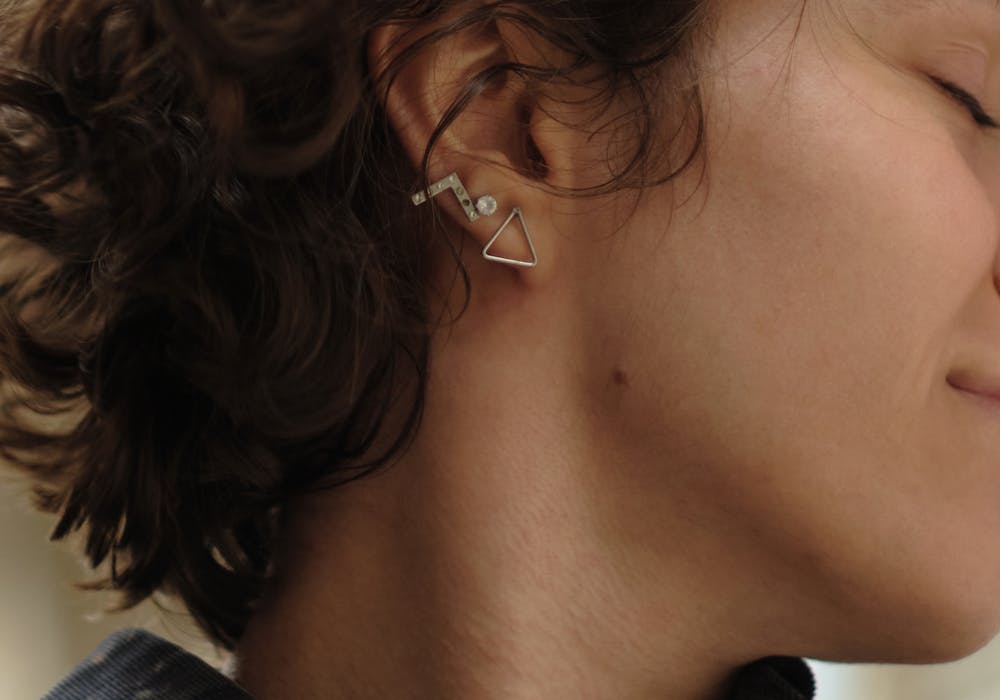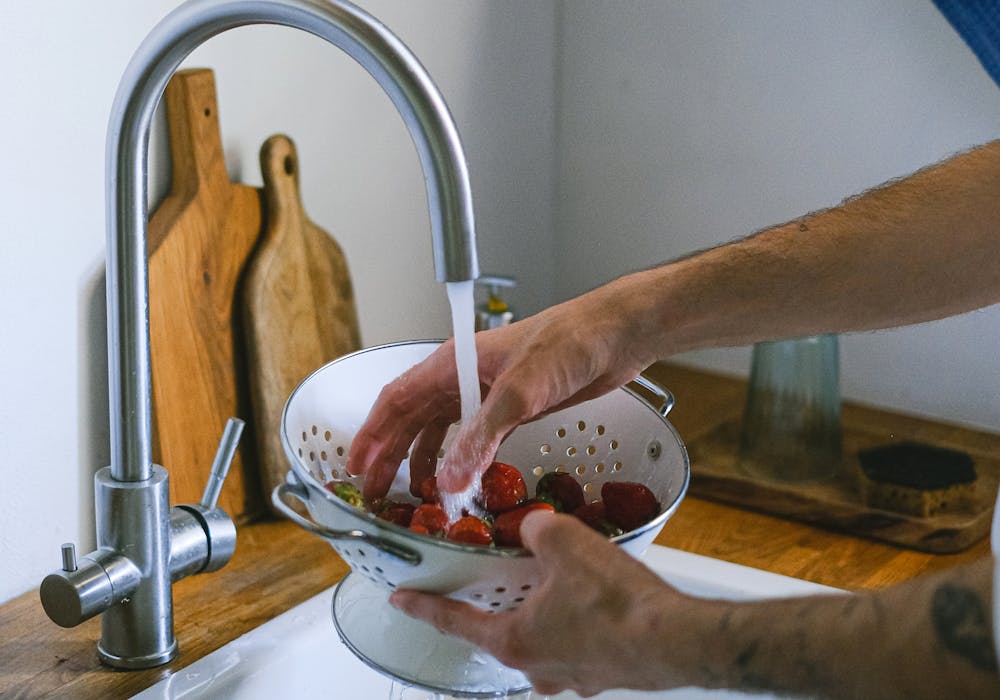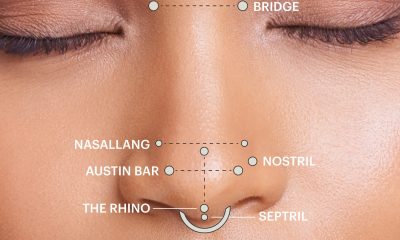Health
Exploring Health Benefits Of Turmeric, Curcumin With Bioperine

Turmeric, curcumin, and Bioperine are esteemed as natural herbs, each offering distinct health benefits derived from their unique properties. These natural gifts from nature have been celebrated for their historical use in traditional medicine and are now garnering attention for their potential in modern health and wellness practices. These herbs stand as cherished elements, known for their diverse therapeutic properties and contributions to holistic well-being.
What Is Turmeric and Curcumin?
For ages, turmeric has been a staple in Indian cuisine, adding its bright yellow color to curry and serving as both a spice and medicinal herb. Studies show that within turmeric are compounds called curcuminoids, with one important compound called curcumin known for its ability to fight inflammation. Curcumin, found in turmeric, is believed to protect blood vessels from inflammation, preventing harm to our organ tissues. Yet, lifestyle factors like exercise routine, diet, and smoking status also impact inflammation levels. While adding turmeric to your diet may help, it might not entirely reverse already established inflammation.
Health benefits of consuming turmeric:
Pain relief effect:
Various studies suggest that turmeric might aid in relieving arthritis discomfort and could have benefits for inflammatory bowel disease. Additionally, recent clinical studies discovered that curcumin, found in turmeric, showed similarity to typical pain relievers in managing knee osteoarthritis pain. It’s crucial to consult with a healthcare professional before considering turmeric as an alternative to painkillers.
Possibility to suppress decline in cognitive function
Curcumin may have the effect of preventing cognitive decline, such as suppressing plaque that causes neurological damage in Alzheimer’s disease . Academic journal American Journal of Geriatric Psychiatry found that daily intake of a certain type of curcumin improved mild age-related memory loss and low mood. In addition, a survey conducted among Asians in 2006 , people who ate a lot of curry scored higher on cognitive function tests (tests that measure things like memory and concentration) than people who ate less.
Reduced risk of certain chronic diseases
Studies have shown that curcumin, found in turmeric, may help lessen oxidative stress, a factor linked to chronic conditions like heart disease, type 2 diabetes, and specific cancers. Its anti-inflammatory and antioxidant abilities could potentially shield against heart issues such as diabetic cardiomyopathy and irregular heart rhythms, as highlighted in a 2017 review published in the journal Pharmacological Research. Moreover, using turmeric might lower the chance of heart attacks post-bypass surgery.
Relieve pain from osteoarthritis
A review paper published in 2016 found that continuous intake of curcumin for 4 weeks was associated with osteoarthritis pain (i.e., it was as effective as taking nonsteroidal anti-inflammatory drugs (NSAIDs) or glucosamine)
Reduces symptoms of hay fever
Curcumin, believed to possess antioxidant and anti-inflammatory qualities, might offer relief for individuals dealing with dry coughs, itchiness, and runny or congested noses due to hay fever. A 2008 review paper mentioned an animal study that explored curcumin’s impact on allergic symptoms. It revealed a suppression of histamine release, leading to a notable reduction in allergic symptoms.
Reduce symptoms of depression
In certain situations, curcumin has demonstrated potential in alleviating depression symptoms when used alongside antidepressants. A study combining curcumin with an antidepressant didn’t show any adverse effects and seemed to offer some positive outcomes. However, it’s important to note that this study was small and conducted over a brief period (only 6 weeks). Some reports indicate the need for caution as the findings might be exaggerated.
Maintain proper cholesterol levels
A study from 2017 looked at seven research papers examining the effects of turmeric and curcumin on blood lipid levels, indicating their potential to reduce certain heart disease risks. However, experts emphasize the difficulty in determining the right amount to use, stressing the need for further research before considering these findings for clinical use.
Helpful in preventing and treating periodontal disease
A 2016 review paper suggested that the anti-inflammatory and antifungal characteristics of turmeric might be beneficial in preventing and treating gingivitis, a prevalent gum disease. While there is evidence supporting this claim, experts emphasize the necessity for additional research to validate these findings further.
How to take turmeric
Turmeric can be added to any dish as long as you like the taste, and it’s a great addition to turning even the most bland dishes into nutritious golden plates. You can also add it to seasonings to make it spicy. Ketchup, mustard, and barbecue sauce containing turmeric are also recommended.It is better to use turmeric in its traditional spice form then Turmeric supplements.
What Is Bioperine
Bioperine, an extract of piperine found in black pepper, holds potent antioxidant and anti-inflammatory properties. It’s known for enhancing nutrient absorption, supporting heart health, and bolstering the immune system. While a sprinkle of black pepper on food is beneficial, a concentrated supplement like bioperine offers a more effective way to access its potent benefits.
Bioperine and black pepper tend to attract attention for their effect of increasing bioavailability, but they also have various other physiologically active effects, and their ingestion brings a variety of health benefits.
The effects of Bioperine on our bodies.
Promote absorption of nutrients
Bioperine’s primary effect lies in enhancing the bioavailability of other nutrients when consumed alongside them. Numerous studies have emphasized its ability to enhance the absorption of vitamins, minerals, and essential active components.
In a double-blind study investigating beta-carotene absorption, individuals consuming 5 mg of piperine twice daily for a span of 14 days alongside beta-carotene displayed significantly elevated blood levels of beta-carotene. The thermogenic nature of piperine is thought to play a role in this observed effect.
Furthermore, research exploring iron bioavailability demonstrated that individuals co-supplementing with Bioperine and iron experienced elevated hemoglobin levels, improved health, and reduced fatigue. No adverse effects were reported, indicating potential benefits in managing anemia and enhancing athletic performance.
Curcumin, an essential compound in turmeric known for its low bioavailability, showed a 200-fold increase in bioavailability when consumed alongside Bioperine compared to when taken alone. Additionally, studies indicate that coenzyme Q10 levels in the blood rise when taken concurrently with Bioperine. Bioperine’s ability to potentially enhance the bioavailability of diverse nutrients like vitamins, minerals, and amino acids stems from piperine’s heat-producing properties.
Supports improvement of blood sugar levels
Piperine, a key component of Bioperine, is gaining attention for not only enhancing nutrient absorption but also boosting the effectiveness of medications.
In an experiment involving diabetic mice treated with metformin, an oral hypoglycemic drug, those administered metformin along with piperine exhibited a more significant reduction in blood sugar levels compared to those receiving metformin alone.
Moreover, piperine shows promise in addressing various metabolic issues linked to obesity. By improving insulin resistance associated with the accumulation of visceral fat, it potentially aids in better blood sugar control, thereby offering potential preventive benefits against diabetes.
Supports visceral fat reduction
Piperine has the ability to stimulate sympathetic nerves and enhance blood flow by widening blood vessels. These actions lead to a rise in body temperature and increased energy metabolism, potentially aiding in fat burning.
In an animal study observing the impact of piperine and black pepper consumption on body fat in mice, those fed with piperine and black pepper for 4 weeks exhibited significant reductions in body weight and visceral fat mass compared to the control group. Interestingly, this fat-reducing effect was observed not only with whole black pepper but also with pure piperine, suggesting that the extract from black pepper, specifically piperine, may play a role in supporting the reduction of visceral fat.
Supports alleviation of metabolic abnormalities caused by obesity
Piperine exhibits anti-inflammatory properties that may aid in addressing metabolic issues linked to obesity. Studies on obese mice revealed reduced levels of inflammatory cytokines like interleukin-β1 and galectin-3 after piperine administration. Additionally, piperine demonstrated the ability to lower mRNA concentrations responsible for generating inflammatory cytokines, indicating its potential to suppress their production.
The administration of piperine in these experiments showed promise in reducing insulin resistance associated with type II diabetes by mitigating obesity-induced inflammatory responses. Moreover, piperine’s thermogenic properties contributed to reducing visceral fat, suggesting its potential in combating lifestyle-related diseases such as diabetes by improving metabolic abnormalities and addressing obesity.
Supports arthritis relief
Piperine has shown potential in providing relief from arthritis symptoms, particularly rheumatoid arthritis, due to its pain-relieving and anti-inflammatory properties.
In laboratory tests, adding piperine to cells resulted in decreased production of inflammatory substances such as interleukin-6 and prostaglandin-2, as well as a reduction in the genes responsible for creating these compounds. Additionally, studies with rats revealed that doses of 20 mg/kg or 100 mg/kg of piperine demonstrated anti-inflammatory effects akin to the steroid drug prednisolone.
Typically, anti-inflammatory medications can burden the stomach and gastrointestinal tract when taken in large quantities, making pain relief challenging. Piperine, being a natural substance without known side effects, holds promise as an alternative treatment for pain relief, substituting or supplementing conventional anti-inflammatory drugs.
Relief of depression symptoms
Piperine has effects on the brain, influencing neurotransmitter production and limiting their reabsorption. In an animal study on depression using rats, those given doses of 10 to 20 mg/kg of piperine for two weeks exhibited improved activities associated with antidepressants. Specifically, it increased serotonin levels in the hypothalamus and hippocampus, while reducing the presence of monoamine oxidase (MAO). Serotonin, known as the “happy hormone,” and MAO, an enzyme that regulates neurotransmitters, play vital roles in enhancing motivation, concentration, and mood recovery by facilitating their normal use in the brain.
Potential to improve cognitive function
Piperine’s impact on the central nervous system offers hope in managing diseases associated with cognitive function like Alzheimer’s and Parkinson’s. In experiments on Parkinson’s disease models using animals, giving piperine orally at a dose of 10 mg/kg for 15 days notably improved both movement and thinking abilities. This improvement was associated with reduced inflammatory markers and harmful microglia, suggesting piperine’s potential in treating Parkinson’s. Similarly, in experiments with Alzheimer’s models, administering 2.5 to 10 g/kg for 15 days enhanced movement and thinking abilities, attributed to piperine’s antioxidant, anti-inflammatory, blood flow enhancement, and neurotransmitter recovery properties, potentially aiding conditions related to cognitive impairment.
Why Combine Bioperine with Turmeric?
Turmeric, belonging to the ginger family, has been used in traditional Ayurvedic healing for millennia. Beyond adding zest to dishes, its historical use includes alleviating inflammation, pain, and fatigue. It’s renowned for its powerful anti-inflammatory properties, aiding conditions such as arthritis, anxiety, and muscle soreness post-exercise.
The active components of turmeric, the curcuminoids, are responsible for its healing prowess. Curcumin, giving turmeric its vivid color, is known for its anti-inflammatory and antiviral properties. Research even suggests its potential in managing cholesterol levels, enhancing memory, and improving mood.
Yet, while turmeric contains curcuminoids, they’re present in relatively low concentrations. Hence, supplements with concentrated amounts are a more reliable means to benefit from turmeric’s medicinal power.
Utilizing Turmeric with Bioperine:
Curcumin, despite its numerous benefits, struggles with poor bioavailability. This means the body struggles to absorb it adequately for significant impact. Here’s where piperine, or bioperine, plays a crucial role. Taking bioperine alongside turmeric or curcumin significantly boosts absorption by up to 2000%. This makes the combination of bioperine and turmeric highly potent.
Supplements featuring robust turmeric and curcumin, combined with bioperine, assist in enhancing nutrient absorption in convenient tablet form
Related Articles:
Health
Improving Quality of Life through Effective Memory Care for Seniors

Memory care is specialized long-term care tailored for individuals with Alzheimer’s disease, dementia, and cognitive impairments. With our society getting older, the need for memory care options that work is increasing. Dedicated facilities provide memory care to ensure a safe, supportive, and engaging environment for seniors facing memory challenges. The goal of effective memory care is not only to provide assistance with daily activities but also to foster an environment that promotes mental engagement and preserves dignity.
The Importance of Professional Memory Care
Incorporating memory care, FL involves implementing top-notch care standards beyond basic help with everyday tasks. It includes putting into practice treatment methods that are tailored to the distinct requirements of people with dementia and Alzheimer’s. By making this decision, we can significantly improve the well-being of older people, allowing them to maintain their autonomy and mental abilities. Dementia care professionals undergo specialized training to handle the unique challenges of memory loss. These specialists are skilled in techniques that promote cognitive involvement, interpersonal involvement, and emotional well-being, all crucial for improving the overall well-being of seniors with memory issues.
Critical Components of Effective Memory Care
An efficient memory care program generally consists of various essential elements created to meet the specific requirements of elderly individuals with cognitive impairments. These components include:
- Safe and secure environments: These environments are tailored to prevent wandering and ensure safety. Features such as secure outdoor areas, locked doors, and easy-to-navigate spaces are essential in preventing accidents and allowing residents to move freely without constant supervision.
- Engaging activities: Activities are designed to stimulate memory and cognitive function, such as music therapy, art therapy, and reminiscent activities. These activities help maintain cognitive abilities and provide a sense of accomplishment and enjoyment.
- Personalized care plans: Care plans are tailored to address each resident’s specific needs and preferences. This customized approach ensures that each senior receives the care that best supports their physical, emotional, and cognitive well-being.
- Highly trained staff: Staff members are trained to understand the complexities of dementia and Alzheimer’s care. This training enables them to provide compassionate and effective care tailored to each resident’s needs.
The Role of Family in Memory Care
Memory care communities must create a cooperative atmosphere that allows families to be involved in care planning and remain updated on their loved one’s status. Ensuring that the care plan stays in line with the senior’s needs and preferences is possible through effective communication between care providers and families. Involving family members in activities and care decisions can offer emotional support to residents and their families, promoting a comprehensive care approach.
Choosing the Right Memory Care Facility
Selecting an appropriate memory care facility is an important decision. When choosing a facility, families must consider the facility’s location, services offered, staff credentials, and the overall feel of the community. Exploring various establishments and observing how employees interact with residents is advantageous. This process enables families to make choices according to the wishes and needs of their members. Families must locate facilities with complete care plans, diverse activities, and a welcoming environment.
Innovations in Memory Care
Technological advancements and innovative therapies are shaping the future of memory care. These innovations, from virtual reality therapy to robotic companionship, provide new ways to engage and support seniors with cognitive impairments. Virtual reality therapy can transport seniors to different environments, helping them to recall memories and engage in activities that they might not otherwise be able to. Additionally, robotic companions can provide comfort and interaction, reducing feelings of loneliness and isolation.
Steps to Support a Loved One with Memory Loss
Supporting a family member with memory loss can be challenging, but there are numerous methods that families can put into practice:
- Educate yourself: Learn about dementia and Alzheimer’s to understand what your loved one is going through. This knowledge can help you provide better support and empathy.
- Maintain open communication: Regularly contact healthcare providers and memory care professionals. This ensures you are up-to-date on your loved one’s condition and care plan.
- Participate in support groups: Receiving advice and learning from individuals in comparable circumstances can be highly beneficial. Support groups offer an opportunity to discuss challenges and gain coping strategies.
- Encourage engaging activities: Promote activities that stimulate cognitive function, such as puzzles, reading, and music therapy. These activities help maintain cognitive abilities and provide enjoyment.
- Ensure a safe living environment: Minimize potential hazards and support independence by creating a safe living space tailored to your loved one’s needs. This can include removing tripping hazards, ensuring adequate lighting, and using assistive devices as necessary.
Conclusion
Memory care is a vital aspect of senior care that requires a thoughtful and comprehensive approach. By understanding the importance of professional memory care, involving families, and staying informed about innovations and best practices, we can enhance the quality of life for seniors facing memory loss challenges. Choosing a suitable memory care facility and supporting loved ones through their journey can make all the difference in their well-being and happiness. Creating an environment where seniors feel valued, supported, and engaged is essential, ensuring they live their lives with dignity and joy.
Health
How to Remove Piercing? A Comprehensive Tutorial

Learn the proper techniques for safely removing piercings to avoid complications and promote healing. Discover step-by-step instructions and essential tips for a smooth and hygienic piercing removal process.
How to Remove and Install Piercings at Home?
You may need to remove your piercing for different reasons. Perhaps you may think that it is not suitable for the environment you will go to, or you may need to take it off for essential reasons. You may just want to take it off because you are bored. In this case, you can easily remove the piercing at home and then easily put it back whenever you want. You should definitely wash your hands before removing or installing. Afterwards, you can ensure the necessary hygiene with the help of cologne or a disinfectant.
You can get help from the part called the ball, which is found in piercing models. The gun is designed to be rotated mostly clockwise during removal. This may differ from model to model. It is important that you move slowly and in a controlled manner, being careful not to make sudden movements while turning, as this will minimize the possibility of tearing or wounding in the hole part. After removing your piercing, you should take care to moisturize the area by applying ointment. If you are not going to use it again, you can continue the necessary maintenance until the hole in the area is closed.
How to Remove Tragus Piercing?
Understanding Cartilage Piercing
This type of piercing; It is used by attaching it to the tiny cartilage wing located in the front of the ear canal, which is directly connected to the head area. It is called cartilage piercing or ear piercing. After the procedure, redness may occur in the relevant area for a few weeks, and a crust may form on the pierced part. At the same time, tenderness and warmth may be felt. By performing the necessary maintenance, you can minimize these possibilities and make the healing process faster.
Care and Maintenance
After the piercing process, you should be careful not to touch the piercing in order to prevent formations such as germs / bacteria. It is important, especially on the first day, that the pierced area does not come into contact with products such as soap, shampoo, or disinfectant. You can get help from clean water and odorless soap to clean and soften the crust formed in the area. The water you use must be warm. You should not immerse the piercing in water for a minimum of three weeks after the installation. When cleaning your piercing, you should avoid rubbing it and dry it with a clean paper towel or cloth. During the cleaning process, you should not use products containing chemicals, alcohol-based or artificial ingredients.
Healing and Aftercare
Recovery time can range from approximately 3 to 6 months. During this period, necessary maintenance must be carried out in order to avoid different complications. Otherwise, there is a possibility that recovery may take up to 1 year. It is not recommended to take a shower on the first day after getting a piercing. Especially in the first week, you should apply an antibiotic-containing cream before taking a shower and do not forget to apply a dressing after you get out of the shower.
One of the things that should be taken into consideration is not to leave the area wet. After the healing process is complete, you can change your piercing if you wish. If you want to remove a tragus piercing, after washing your hands thoroughly and ensuring that you have maintained the necessary hygiene, you should remove the ball at the back while supporting the front of the tragus with your finger and then pull the pin forward. It is extremely important to stretch the area of interest towards your face when removing it.
How to Remove Ear Piercing?
One of the most preferred areas for piercing use is the ear. One of the reasons for this is that there are many points in the ear area that can be pierced. In order to avoid confusion, there is a name determined for each region. Many people wonder whether this procedure is painful or not. This may vary from person to person, but also depending on the ear area where the procedure is performed and the professionalism of the person performing the procedure.
Therefore, it is possible to say that the area of your ear that you will pierce will directly affect the pain you will feel. While the earlobe is the least painful area in the ear area because it consists of flesh, procedures in the cartilage part may cause more pain due to the harder area. The healing process is also directly related to this situation.
In addition to the expertise of the people performing the process, they also work in hygienic conditions; It is effective not only in making the procedure easier and more painless, but also in making the healing process faster and in minimizing problems in the relevant area. If you want to remove or change your ear piercing; It is a priority for your hands to be clean and dry to avoid problems such as inflammation. You should disassemble the ball and pull the pin part with slow and delicate movements. You can move more easily by tying your hair before the procedure to prevent it from getting in the way.
How to Remove Nose Piercing?
The nose, which is one of the focal points of our face, is one of the most preferred areas by piercing lovers. It is possible to achieve a very pleasant appearance by making a choice that suits your face shape. The procedure is performed on the soft tissues on or around the nose. It is important to make your choice among the varieties that will make you feel comfortable on your skin, as well as to consider the ones made of quality and stainless materials. It is important for health that the equipment used during the procedure is sterile. Afterwards, it is necessary to use lotions with antibacterial properties to prevent inflammation. Piercings worn through nose piercing mostly have a clip-on design. To remove it, simply turn the clip. However, removal is not recommended until the end of the healing period.
How to Remove a Stuck Piercing Ball?
Piercing ball is available not only in the mass models from which it takes its name, but also in pointed, figured or solitaire-shaped varieties. It helps you to take off or put on your jewelry easily. In some cases, compression may occur in the ball part of the piercing you use. You can try turning it clockwise and counterclockwise. If you cannot get results, you should get help from an expert to prevent bleeding, damage to the perforated part, and most importantly, to avoid inflammation.
Art of Piercing: Aesthetic Trends and Health Considerations
Piercing, a beloved adornment embraced by individuals of all genders, entails the insertion of jewelry into the perforated layer beneath the epidermis, often puncturing through the adipose tissue.
This intricate process can extend to the cartilaginous structures, demanding meticulous attention during both the application and removal phases to avert skin distortions and mitigate the risk of microbial contamination.
Choosing Authenticity: Material Selection and Environmental Consciousness
Foremost, the authenticity of the chosen piercing design warrants scrutiny. Given its intimate contact with the skin, meticulous consideration of high-grade materials is imperative to safeguard personal health. Equally pivotal is the setting in which the piercing is to be affixed; a pristine, sanitary environment is non-negotiable to forestall potential complications.
Evolving Trends: Style Dynamics and Personal Preferences
As sartorial tastes evolve incessantly, deliberation on the longevity of piercing fashion becomes imperative. The versatility of piercing placement accommodates diverse personal styles and aspirations, albeit subjecting individuals to varying degrees of discomfort and susceptibility to adverse effects such as hemorrhage and inflammation.
Navigating Societal Constraints: Institutional Policies and Continuous Care
Navigating institutional prohibitions on piercing, prevalent in educational and organizational settings, necessitates thoughtful deliberation. Furthermore, initial adherence to a designated healing period post-piercing installation is paramount, with subsequent removals discouraged to mitigate potential complications.
Conclusion:
The piercing you provide is extremely important in order to ensure healthy use and to avoid any undesirable health problems. The quality of the materials used in the product directly affects each element. For this reason, you should be careful to choose reliable brands.
Read Also:
Understanding Degloved Face Injuries: Types, Causes And Treatments
Health
DIY Berry Bliss: How to Clean Strawberries with Household Items

The strawberry is the iconic fruit of world confectionery due to its very aesthetic appearance, exquisite and versatile flavor. But it is also part of almost any healthy diet. It is no wonder, since its important contribution in nutrients benefits the body greatly: it controls sugar, facilitates the elimination of uric acid, has alkaline properties, combats anemia, favors the immune system, among many other benefits.
However, if not properly sanitized, it can become quite the opposite, exposing the body to numerous dangerous pathogens such as cysticercosis, hepatitis A and others. For this reason, we will share with you how to clean strawberries in the correct way, using different natural and homemade antiseptics.
How to clean strawberries with vinegar
White vinegar has recognized antimicrobial properties, excellent for disinfecting fruits, and it is also non-toxic. Most of its antiseptic action comes from its versatile pH, which is acidic, but can change to alkaline. In this way, it eliminates or neutralizes many types of microorganisms.
However, it is important to know that its effectiveness is around 80%, since there are microbes that it cannot eliminate or inhibit.
To disinfect strawberries with vinegar, follow these steps:
- Wash your hands very well for 20 seconds.
- Sanitizes the work area very well. Disinfect the table, knife, board, etc.
- Select the strawberries. Separate the damaged ones from the whole ones and sanitize them separately . Do not remove the leaves to wash them. If you do, you open the door to microorganisms and can contaminate the fruit.
- Prepare a large container with half water and half vinegar . Let the strawberries sit in the container for 15-20 minutes.
- Rub the liquid over the surface of the strawberries. Use a special brush for this job. Do it carefully so as not to mistreat them, since strawberries are very delicate.
- Rinse them very well under running water.
- Pass the strawberries through the strainer and then dry them very well , using paper towels. Strawberries should never be left wet, as this accelerates their deterioration process
How to clean strawberries with salt
Sea salt is a natural antiseptic that was already used in ancient times. It is very efficient, but its application can slightly alter the original flavor of the food (it gives it a salty touch). However, it is an excellent alternative, since we will always have it on hand. To disinfect strawberries using salt, follow these steps:
- Wash your hands thoroughly.
- Cleans the work area very well .
- Sort the strawberries. Separate the damaged ones from the whole ones and disinfect them separately . Leave both the stem and the leaves.
- Pour 1 liter of warm water and a teaspoon of salt into a large bowl . Let them rest for 5-10 minutes.
- Clean the strawberries. Scrub them with a soft brush or your hands. Do it by taking advantage of the antiseptic water that covers them. Use little force, be subtle or they will break down.
- Rinse them with plenty of water under tap water.
- Pass them through a sieve and then dry them carefully , using absorbent kitchen paper.
How to clean strawberries with baking soda
Baking soda is a water-soluble compound that has a slight alkaline taste. When this product is exposed to a somewhat strong acid, it decomposes into carbon dioxide and water. This reaction makes it an effective natural , non-toxic and tasteless disinfectant , perfect for sanitizing food!
- Clean your hands and all the necessary elements to disinfect the strawberries.
- Choose the strawberries . Do not put the damaged ones together with the whole ones and disinfect them separately. Do not remove the stem or leaves.
- Pour 1 liter of warm water and 2 teaspoons of baking soda into a large bowl . Wait for 15-20 minutes before proceeding to the next step.
- Clean the strawberries . Rub them with your fingers or a special brush, taking advantage of the antiseptic water that covers them.
- Rinse them with plenty of water . Let the tap water run over them.
- Dry them very well but carefully. Pass them through a sieve and dry them with absorbent paper.
How to clean strawberries with lemon
Lemon is a magnificent natural germicide due to its high level of acidity. This transforms the pH in bacterial cells, developing an acidic environment in which the microbes cannot survive. Much is said about its effectiveness, even putting it above vinegar. If you want to use this natural product to clean strawberries, follow these simple steps:
- Wash your hands and everything necessary to sanitize the strawberries.
- Select the strawberries . Separate the damaged ones from the whole ones and sanitize them separately. Leave the stem and leaves.
- Wash the lemons very well , rubbing the peel with a brush and rinsing them with plenty of tap water.
- Place the strawberries in a large bowl with 1 liter of water and ½ liter of lemon juice . Let them rest for 15-20 minutes.
- Scrub the strawberries with a soft brush . Take advantage of the antiseptic water that covers them while you rub them. Run your fingers to check that there are no traces of dirt or other dirt.
- Rinse them with plenty of water . Do it without exerting too much force on them.
- Dry them very well but without mistreating them . Help yourself with a strainer and use absorbent paper towels.
How to disinfect strawberries without chlorine
If we do not want to sanitize the strawberries with chlorine, there are many other healthier alternatives, but perhaps with less effectiveness. Common hydrogen peroxide, the one sold at the pharmacy, is used to sanitize food, because it is not toxic and eliminates microbes.
Hydrogen peroxide or hydrogen peroxide has antiseptic properties, capable of eliminating microorganisms through oxidation, as it produces a controlled burning process. Now, how do we disinfect strawberries with this product?
- Clean your hands. Every time you sanitize food or work with anything in the kitchen, you should wash your hands for 20 seconds, rubbing them all over.
- Sanitize the work surface and all necessary materials.
- Sort the strawberries. Separate the damaged ones from the whole ones and disinfect them separately . Do not remove the stem or leaves.
- Place 1 liter of water in a large bowl with ½ cup of hydrogen peroxide (10 volumes, for medical use) and follow the same method that we used to disinfect the lettuce : wait for 15-20 minutes until the antiseptic works. effect.
- Rinse the strawberries with plenty of water straight from the tap.
- Pass them through a sieve and dry them with a paper towel. They must be completely dry. During the process, try to treat them very delicately, because they are damaged very easily.
Read Also:
-

 Top2 years ago
Top2 years ago2022 US House committee releases Trump’s tax returns, capping a years-long battle
-

 News1 year ago
News1 year agoUSPS EMPLOYEE ASSISTANCE PROGRAM SERVICES AND BENEFITS
-

 Top2 years ago
Top2 years agoInterview With Niantic CEO John Niantsullivan
-

 Top1 year ago
Top1 year agoUnderstanding the Healing Process of Nose Piercings – A Comprehensive Guide
-

 Auto1 year ago
Auto1 year agoTop Porsche Taycan Incentives: Save Big
-

 Business12 months ago
Business12 months agoDoes 7-Eleven Take Apple Pay
-

 Business11 months ago
Business11 months agoBeware Of Fake Emails And Fake Apple Pay Images
-

 Tech1 year ago
Tech1 year agoUSPS LiteBlue ePayroll: A Comprehensive Guide
